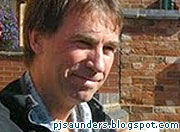Claims that the legalisation of euthanasia in Holland has not led to an increase in the number of cases have been questioned by a leading pro-life doctor.
A new study, which was published in The Lancet, found that the rates of euthanasia and assisted suicide before and after the 2002 euthanasia law were “comparable”.
But Dr Peter Saunders, of Care Not Killing, said: “A careful examination of the figures tells a very different story.”
Intention
According to the study 2.8 percent of all deaths in 2010 were the result of euthanasia or assisted suicide. This compares to the 2001 figure of 2.6 percent.
However, Dr Saunders warned that the study revealed an increase in the number of people dying after ‘continuous deep sedation’ and ‘intensified alleviation of symptoms’.
He said that it is “not at all clear how many of these two categories” had “involved the explicit intention to end life”.
Suspicious
He continued: “But the huge increase in number of patients dying in each of these categories since legalisation in 2002 is very suspicious indeed.
“It appears that Dutch doctors have kept the euthanasia figures low simply by choosing to end patients’ lives in ways other than administering paralysing drugs (muscle relaxants) or barbiturates.
“In other words they are making more decisions to end life than before legalisation but are just carrying it out and recording it differently.”
Opposition
Last month doctors in Britain reiterated their opposition to assisted suicide and voted down a motion calling for their union to adopt a ‘neutral’ stance.
Professor Raymond Tallis tabled a motion calling for the British Medical Association (BMA) to drop its opposition and move to a “neutral position” on the issue.
But the proposal, which came amid a campaign to change the nation’s end-of-life laws, was rejected by delegates at the BMA’s annual conference.

